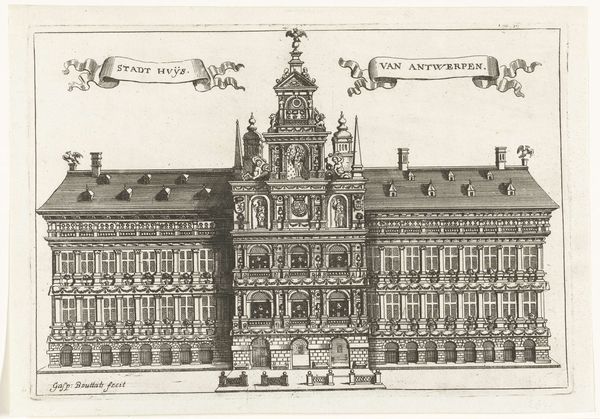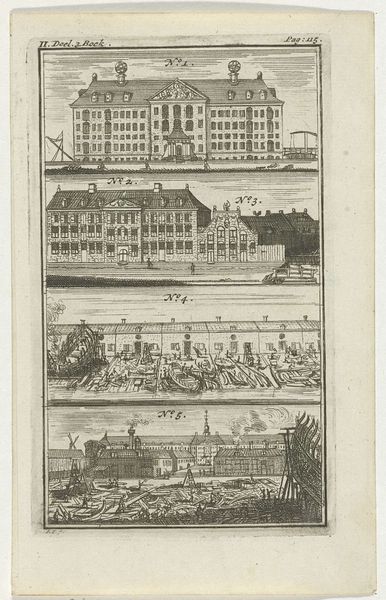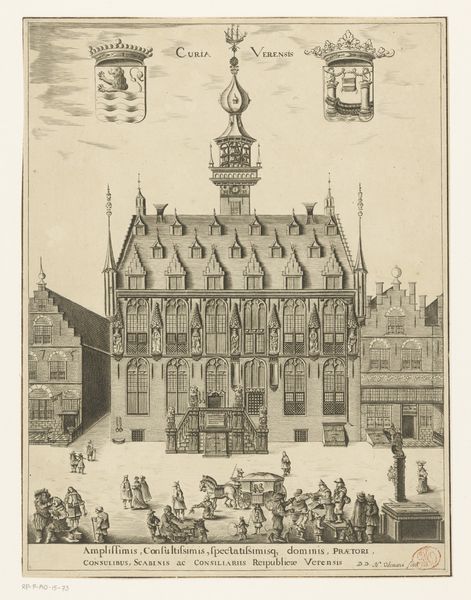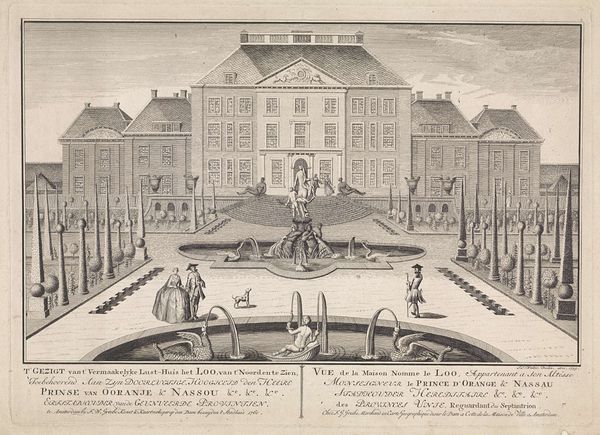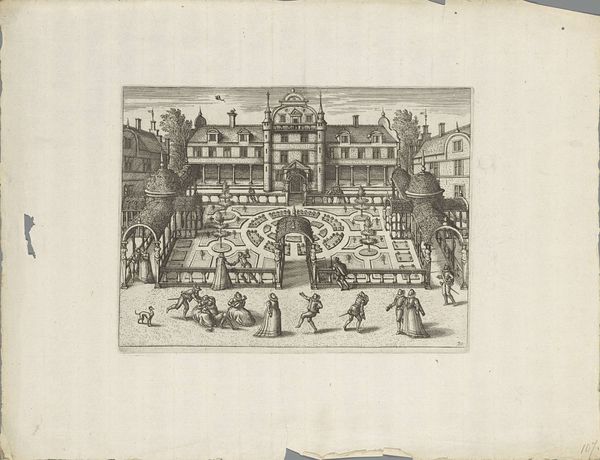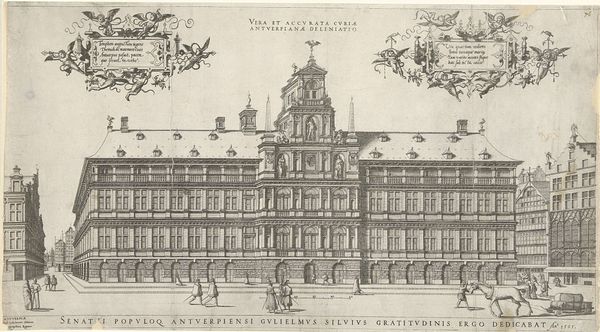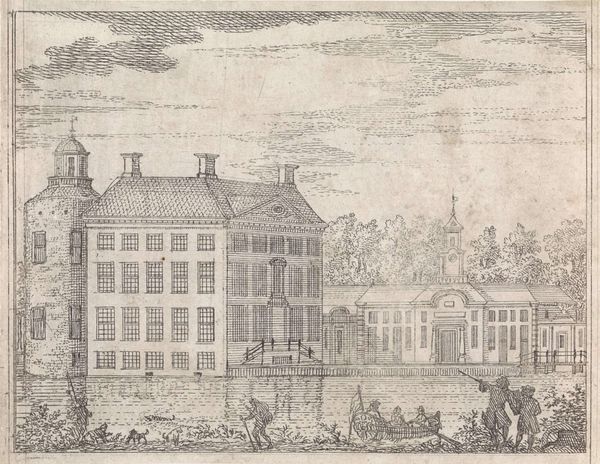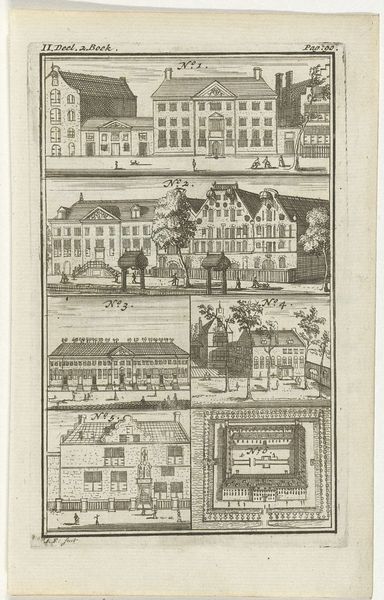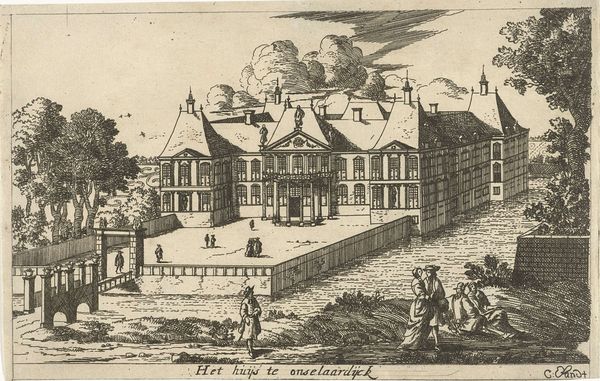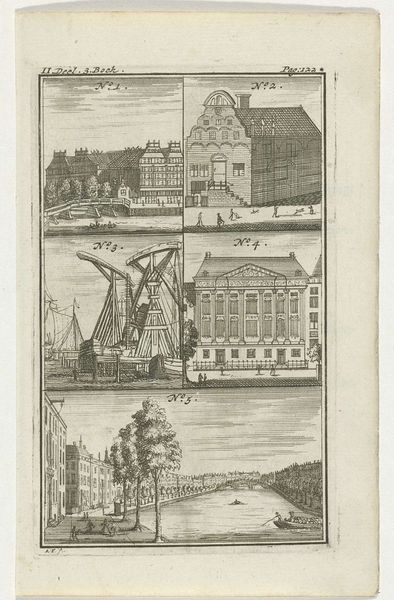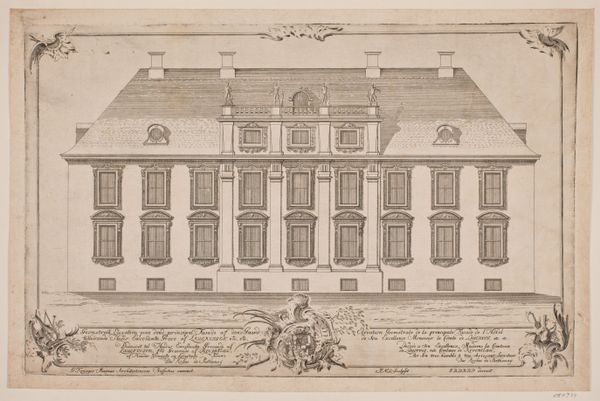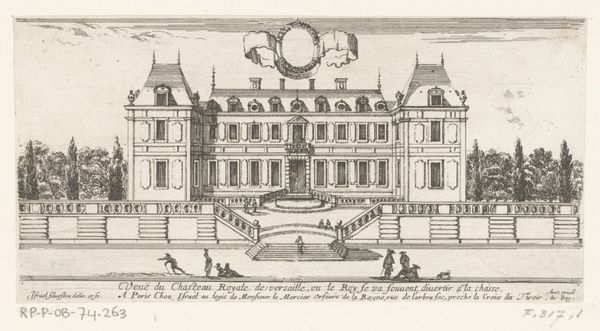
print, engraving, architecture
#
baroque
# print
#
old engraving style
#
landscape
#
line
#
cityscape
#
history-painting
#
engraving
#
architecture
#
realism
Dimensions: height 328 mm, width 248 mm
Copyright: Rijks Museum: Open Domain
Curator: Look at this intriguing print! It's titled "Gezicht op het Oude Stadhuis te Vlissingen," which translates to "View of the Old Town Hall in Vlissingen." It was created sometime between 1647 and 1659, and the artist is Hendrik Udemans. Editor: Immediately, I’m struck by the level of detail. It feels almost architectural in its precision. The bustling town square contrasted against the rigidity of the building creates a fascinating tension. Curator: The use of engraving to achieve this effect is key, wouldn't you say? Udemans' expertise emphasizes not just the physicality of the building, but its presence as a symbol of authority and civic life. Notice how the building dominates the landscape. Editor: Exactly. But it's not just the architectural skill; it's about the politics of space. Who occupies this space? Who has access? How is power performed and enforced through the layout of this town square and by depicting all those men. There seems to be no agency or place for woman and people of color within the visual hierarchy established by Udemans. Curator: Well, the scene certainly tells a story of Vlissingen in the mid-17th century. As a port city with considerable mercantile importance, this civic space played a role in creating that cultural and economical narrative. The town hall served not only as a place for governing but as a backdrop for civic rituals. It's crucial in understanding the socio-cultural importance of Vlissingen. Editor: I agree that we should examine its symbolic role. Consider that through depicting architecture, it tells a story about gender, identity, and social interactions—specifically, about power and exclusion. If one wants to explore the deeper significance of urban landscapes, we have to recognize that buildings are rarely neutral or universally representative spaces, despite often being depicted as such. Curator: Looking closely at the attire and postures of the figures can reveal details about the different social classes within the population and offers insights into societal customs, fashion, and behaviours. Editor: Precisely, and understanding how such visual representation serves both ideological and aesthetic purposes. What we are viewing has cultural, social, and power dynamics all interlaced into a two-dimensional surface, not a mere image, Curator: An extremely valuable interpretation. Udemans provides a visual portal into Vlissingen that raises fascinating and uncomfortable questions concerning cultural, social and power. Editor: Yes. When carefully explored, it is in confronting such nuanced social and political dimensions of art that allow us to meaningfully engage with its legacy.
Comments
No comments
Be the first to comment and join the conversation on the ultimate creative platform.
